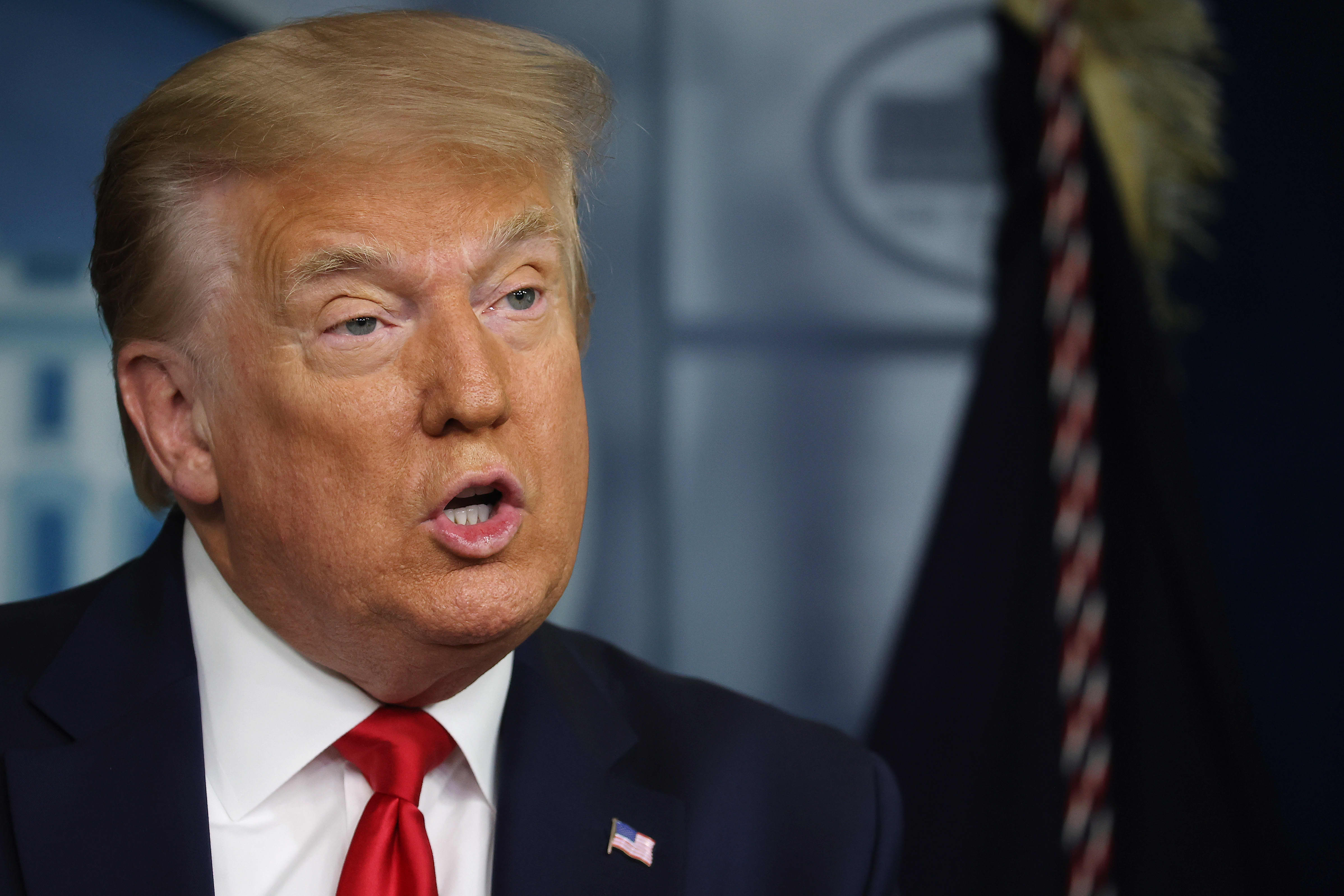
President Donald Trump speaks to journalists in the Brady Press Briefing Room at the White House July 2, 2020. The president addressed reports that the unemployment rate fell to 11.1%.
Chip Somodevilla/Getty Images
The U.S. unemployment rate is at its lowest level in months and the economy added a record number of jobs in June.
“The Great American Comeback continues!” Rep. Fred Keller, R-Pa., tweeted after the Bureau of Labor Statistics’ employment update on Thursday morning.
President Trump cited the news as evidence that the “economy is roaring back.”
But there are many reasons to temper those positive vibes, according to economists.
The employment crisis is still worse than any time since the Great Depression, the country’s worst economic downturn in its industrial history.
At least 10 million more people are jobless compared with pre-pandemic levels. Layoffs once deemed temporary have turned into permanent job loss. Millions are still filing for unemployment benefits each week.
The employment situation could stall or reverse course once supplemental unemployment aid expires after July and businesses exhaust federal relief funding that’s propping up payrolls.
States have also had to halt or reverse their reopening plans due to flareups of coronavirus infection.
“The outlook doesn’t look too positive,” said Ioana Marinescu, an assistant professor of economics at the University of Pennsylvania. “I don’t think we are out of the woods at all.”
Unemployment rate
The unemployment rate fell to 11.1% in June, a notable improvement from the 14.7% rate in April and 13.3% in May.
However, those levels are higher than at any time in six decades, toward the end of the Great Depression.
By comparison, the unemployment rate peaked at 10% during the Great Recession a decade ago. It’s also a stark reversal from February’s 3.5% rate.
About 5 million Americans have come off the unemployment ranks since April, the peak of the coronavirus-induced employment crisis.
But there are still about 12 million people without jobs who had one in February.
“Obviously, it’s still really bad. It’s just the [June] numbers weren’t as bad as [May],” Marinescu said.
Permanent job loss
The share of workers who’d been temporarily laid off continues to decline, suggesting that many have been recalled to their jobs as businesses reopen their doors.
But some of this dynamic is likely attributable to these temporary layoffs becoming permanently lost jobs, as businesses closed for good or couldn’t support as large a staff due to economic pressures.
More from Personal Finance
Here’s why the unemployment rate is so important
Here’s what Medicare could cost you in retirement
What the next relief bill might look like
The number of permanent job losers increased to 2.9 million people in June — which is up by about 1.6 million people since February, according to the Bureau of Labor Statistics.
While some furloughed workers still get benefits like health insurance from their employer, that’s not true if they lose that job permanently.
Also, the number of people considered “long-term unemployed” — those without a job for at least 27 weeks (or, more than six months) — swelled by 227,000 people, to 1.4 million, from May to June, according to the Bureau.
This is a riskier period of joblessness. It generally becomes more difficult to find a job when unemployment stretches over a longer time period — and will be especially hard in the current dismal job market.
Stalled economy
There are also signs the economic rebound is stalling.
Shifts worked by hourly staff have begun slowing over the past several weeks, according to data from Kronos, which supplies workforce management software to businesses.
In May, the number of shifts worked each week grew by about 2% to 3% nationwide, according to Kronos. That growth was cut in half last month.
The firm tracks roughly 14 million to 16 million weekly shifts.
“In the last two weeks, the pace of those gains has definitely slowed,” said Dave Gilbertson, the firm’s VP of strategy and operations.
Many states have had to pause their reopening plans or reimpose shutdowns of certain industries amid rising Covid-19 infection rates.
Texas and Florida, for example, moved to close bars again. California’s governor announced some tougher restrictions on establishments like restaurant dining and wineries.
New York mayor Bill de Blasio indefinitely postponed a plan to allow indoor dining service again.
Such plans may cause businesses to lay off employees again as a result of closure or reduction in consumer activity.
“Don’t let the size of the rebound confuse you — it’s still a partial rebound as more [temporary] layoffs convert to permanent,” Arindrajit Dube, an economics professor at the University of Massachusetts Amherst, said in a tweet. “And a lot of headwind already coming our way [new closures].”
Millions of people are still filing for unemployment benefits. About 1.4 million Americans filed claims for benefits just last week, according to the Labor Department.
Even if things were to level off rather than worsen, it would be bad news for the U.S.
“If things stay like this, it’s just terrible,” Marinescu said. “It’s like the worst economy we’ve seen since the Great Recession. So there’s no cause for celebration.”
Unemployment aid is ending
Meanwhile, federal aid that’s been propping up employment and household income will soon expire, unless Congress passes additional relief measures.
Economists fear that could result in more layoffs after July as businesses close and consumer spending drops.
Americans receiving unemployment benefits have been getting an extra $600-a-week federal supplement on top of their state jobless aid. That will expire after July 31.
Businesses that received a loan through the Paycheck Protection Program may also be near to exhausting those funds.
Borrowers could first apply for the loans in early April. They were initially required to spend the funds within eight weeks in order for the loan to turn into a federal grant. That requirement was recently changed to 24 weeks.


